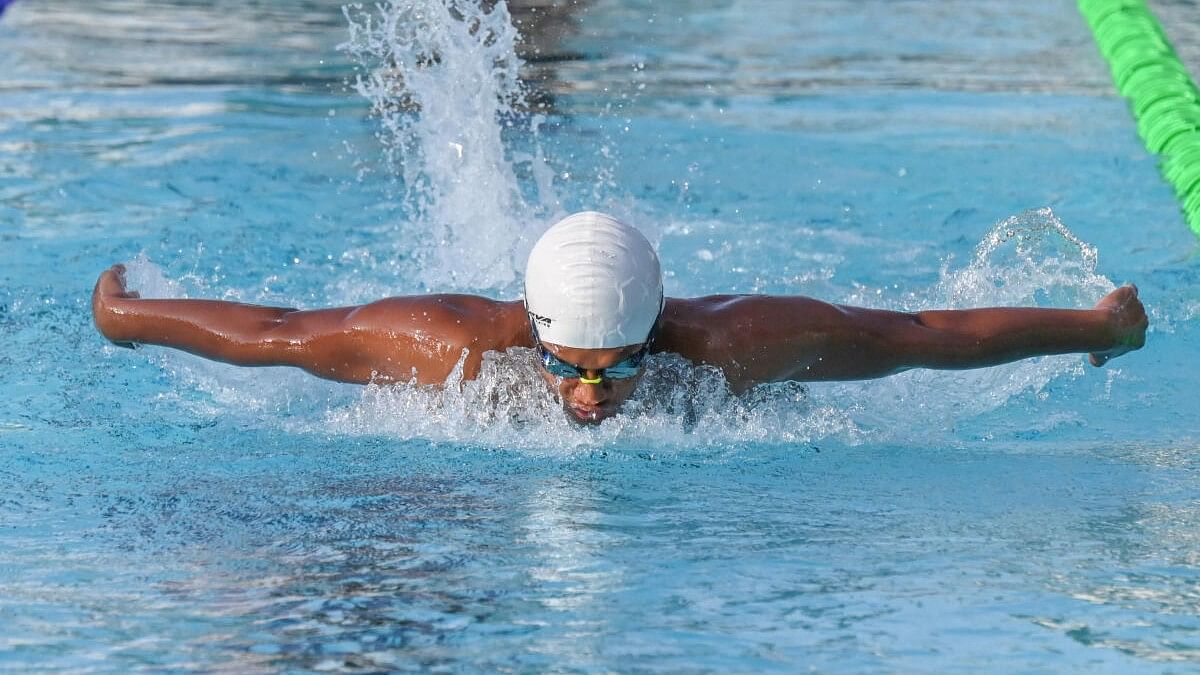
Representative image.
Credit: DH File Photo
A rule tweak to further split Group 1, 2 and 3 swimmers to sub-divisions A, B and C in State Sub Junior and Junior swimming championship events henceforth could result in positive outcomes for the future of the sport, the Karnataka Swimming Association (KSA) hopes.
Starting from the NRJ State Sub Junior and Junior Swimming Championships, Group 1, which previously clubbed swimmers aged 15-17 in the same bracket, has been split into sub-groups A, B and C for those aged 15, 16 and 17 respectively to further boost chances of younger swimmers winning medals. A similar change has been made for Group 2 (12-14 years) and Group 3 (10-11 years) swimmers.
M Satish Kumar, secretary of KSA and Vice President of the Swimming Federation of India, listed the several benefits of this change.
"It is one of the most innovative initiatives we have taken in KSA. We were losing more than 60-70% of swimmers under 17 by the time they got a chance to win due to them getting demotivated," Satish said.
"We wanted to make a change and see whether breaking it into single years will get more people into the higher groups without any dropouts," he added.
Satish denied that this tweak could have ramifications when younger swimmers eventually compete with elder ones in national and international events.
"Out of these three age groups that we have separated, we are taking the best two to the nationals. They are anyway going to swim with higher age-group people there. The most important point is instead of having three medallists and eight finalists in one event, we are having nine medallists and 24 finalists. In another two or three years, we have to have three times more people swimming in the oldest age group. That is the vision," he said.
Satish indicated that the feedback has been positive so far, and that he plans on sharing the positive testimonies with other Indian and Asian federations.
"People who thought they will never get to a final are winning medals. A single medal can motivate one person to go to the Olympics. It can be a strong mental change, you never know. Even if one swimmer gets motivated like that, our effort is a success.
"Karnataka has always made headway towards bigger changes. When we go to our Asian or All India general body, we will definitely table this with all the reactions and testimonies of the swimmers and parents who have understood and realised that this is a very big and important change that Indian swimming wants," Satish outlined.
Olympic-bound 14-year-old swimmer Dhinidhi Desinghu echoed Satish's claims, highlighting the benefits on offer for younger swimmers.
"This would keep swimmers motivated to continue the sport. Maybe in this way the younger swimmers could get a shot," Dhinidhi said.
"This change will make sure that there is no gap in growth, skill and coaching within a category. We have approached the Swimming Federation of India with the intention of modifying their rules with this addition. It has proven to be a successful initiative," KSA President Gopal B Hosur said.